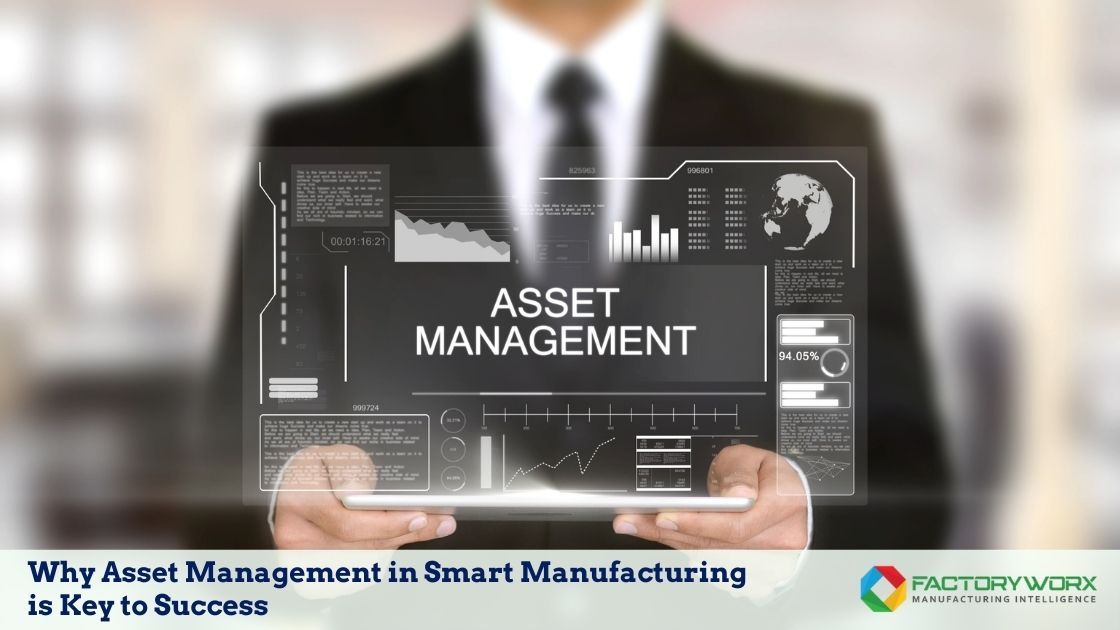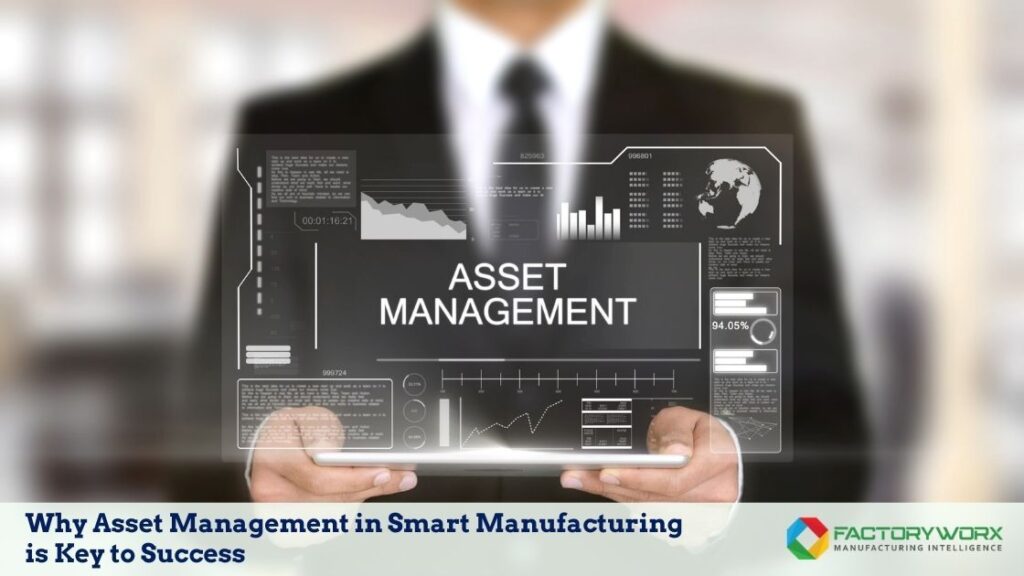
- May 5, 2022
- admin
- 0
Read Our Blog

Why Asset Management in Smart Manufacturing is Key to Success
Implementing asset management in Manufacturing can be an essential part of the asset-heavy industry.
Manufacturing is an asset-intensive business. To guarantee that everything is working to its full potential, you'd have to keep track of equipment, parts, and even manufacturing lines. Supplies and spare parts must always be available for production use or in the event of equipment breakdown to keep operations functioning at the optimal level.
This article explains what smart Manufacturing means, how asset management helps smart Manufacturing and ways to deploy it.
What is Smart Manufacturing?
It is a technology-driven approach that uses Internet-connected equipment to monitor the manufacturing process. It aims to find ways to automate activities and increase manufacturing performance through data analytics.
Manufacturers can also look for trends in the data to see any points in their processes where production is slowing down or is inefficient in using their materials. Furthermore, data scientists and other analysts can utilise the information to run simulations of various techniques to find the most efficient methods.
As smart Manufacturing gets more widespread and more machines are connected to the Internet of Things, they will be able to interact more effectively, potentially leading to increased automation.
FactoryWorxTM Maintenance and Asset Management is an IIoT-driven system with improved capabilities for swiftly collecting and analysing data from a wide range of equipment and delivering critical insights in real-time. This solution assists firms in lowering manufacturing costs while also increasing efficiency, quality, and customer satisfaction.
FactoryWorx Enterprise Asset Management software superior integration, analytics, and reporting capabilities enable manufacturing businesses to reduce or eliminate the critical manufacturing cost driver: downtime associated with equipment performance.
What are the benefits of Asset Management in smart Manufacturing?
Efficient Tracking and Monitoring of Manufacturing Assets
When it comes to smart asset management, this is one of the first functions that come to mind. Manufacturing is an asset-intensive business, as previously indicated. That is to say, there are many various assets to track, ranging from significant pieces of the production line machinery to minor instruments in the maintenance department, such as a hand drill.
Tracking assets and monitoring their current health and performance is considerably more accessible with a smart asset management system. Asset managers will be able to see the location, frequency of usage, and custodian of any asset, thanks to barcode and RFID tracking.
Manufacturers can further optimise their industrial operations by combining the data with other information, such as maintenance regulations. For example, you can make better cost estimation and procurement decisions in the future if you discover that you own four-hand drills but only utilise two of them.
Creating Reports with Speed and Ease
Due to various factors such as raw materials, demand, labour, and certification and testing expenses, manufacturing companies suffer a great deal of unpredictability when it comes to cost variations. It makes budgeting and expense control challenging.
A smart asset and inventory management system can generate accurate information on current asset values, including depreciation estimates and future maintenance and replacement costs. The primary data is transformed into valuable insights, which greatly benefit the company’s financial department.
You can utilise these reports to estimate future trends based on client requirements and market variations. As a result, it’s easier to track and reduce expenditures while increasing production.
Accurate and trustworthy reporting benefits everyone since it leads to better business projections and decision-making, allowing manufacturers to stay ahead of the competition.
Compliance With Strict Safety Requirements
Heavy machinery and equipment are used regularly in the manufacturing industry. It is why businesses must verify that these assets operate correctly and safely. Accidents might occur if suitable safety procedures are not in place.
According to OSHA statistics, the industrial sector is responsible for most safety breaches. The key to avoiding severe errors is addressing them at their source and complying with general safety standards.
A cloud-based smart asset vending system allows manufacturing businesses to conduct regular equipment inspections and preventive maintenance to reduce the chance of breakdowns. Technicians can be instantly notified and take action when checks are required because every machine is labelled in the system.
Along with the equipment specifications, managers can attach safety standards. It ensures absolute compliance with all the rigorous safety requirements.
Why Should Asset Management Be Used in Smart Manufacturing?
Despite the numerous advantages, some firms may still doubt the necessity for asset management, particularly if they already have a system in place, such as Enterprise Resource Planning (ERP). However, because this is a widespread misunderstanding, it’s critical to understand the differences between AMS and ERP.
Many asset-intensive companies try to “make do” with the asset management capabilities of their ERP system. However, many of these businesses discover that ERP lacks the tools necessary to manage assets efficiently.
Companies can profit from a system that can provide an in-depth picture by using a single platform to manage and maintain tangible assets.
Furthermore, the correct management solution may be integrated with logistics, allowing anyone to keep track of inventory in real-time. It can also aid in deploying equipment to individuals and teams and automating maintenance programmes to reduce downtime.
An ERP system may help in the automation of corporate operations. Still, a good AMS platform aids in automating the actual day-to-day activities of a manufacturing organisation. ERP may assist in managing corporate processes, but AMS can help in the maintenance, ordering, and deployment of those processes.
Asset management software is the best solution if you’re in an asset-centric firm, such as Manufacturing, with many linear assets, such as machines and cars.
How to Manage Manufacturing Assets
Manufacturing asset management impacts more than just the machines and facilities. It touches on every part of the company, from human resources and employee management to the design and maintenance of IT infrastructure. When it comes to asset management, here are some things to consider for your manufacturing company:
Creating and storing data
For asset management software to work correctly, your company must be able to collect and store asset performance data. With integrated sensors that can relay diagnostics, gathering data from equipment isn’t as tough as it used to be, thanks to smart factory and the industry 4.0. However, how your company collects data is critical for data collection.
Proper IT infrastructure
Asset management is achievable with a shared drive and many Excel spreadsheets, but it’s not always the best way to go. Your company could develop blind spots quickly, obstructing its progress and limiting its production. Instead, implementing an asset management system as part of a more comprehensive ERP solution can be significantly more efficient.
Remove barriers
Industry 4.0 symbolises the next generation of productivity, but it requires collaboration, networking, and data exchange to be effective. Consider opening up new communication channels across those teams or restructuring to eradicate barriers if your corporate culture consists of different silos and departments that are ring fenced with their duties.
An asset management system is a must-have tool for firms that wish to lower overall asset maintenance expenses. All the while, they want to increase their asset turnover ratio and extend the lives of their machines and other vital assets. For asset-heavy businesses like Manufacturing, it’s both a necessary step toward brilliant factories and a necessary aspect of staying competitive.
An asset management software programme is perfect for your manufacturing company, no matter how big or small it is.

